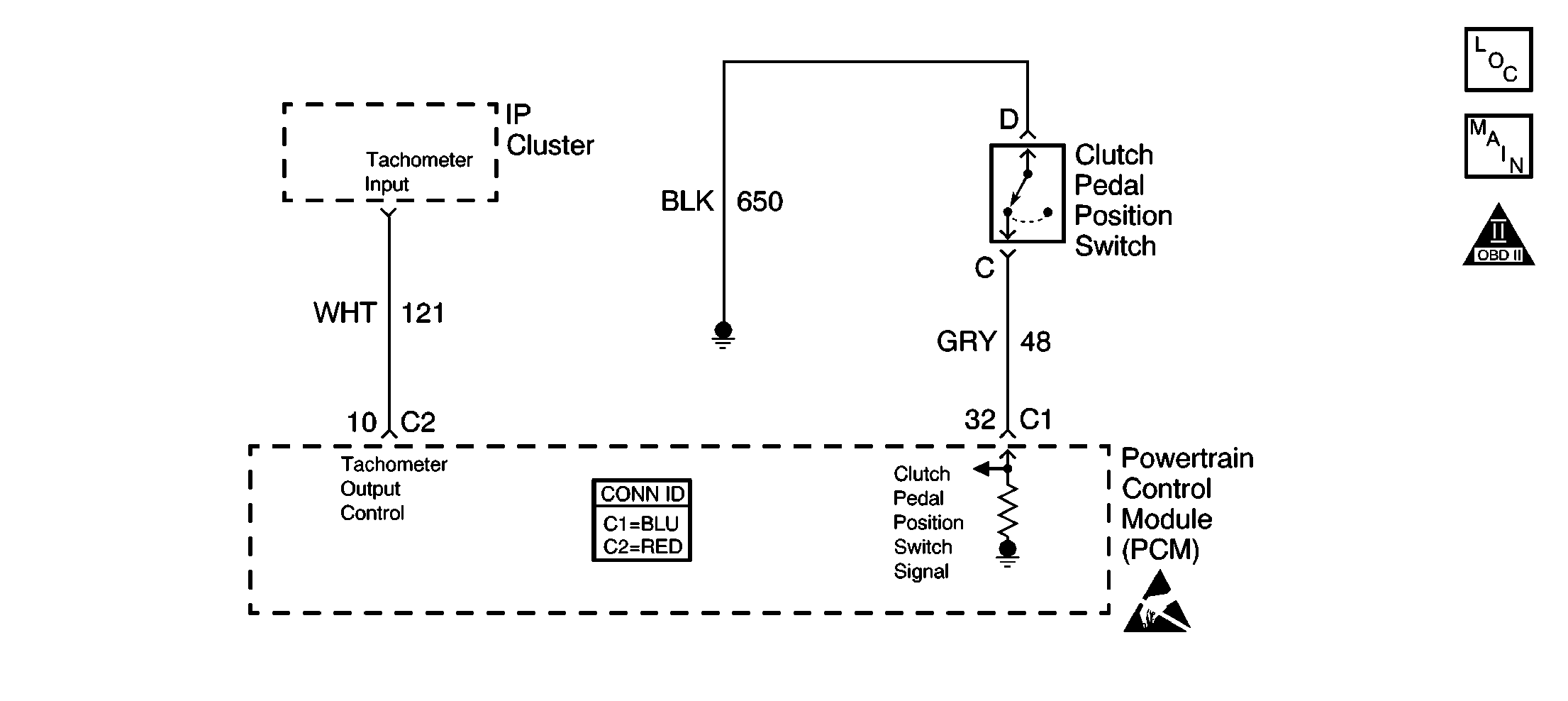
Circuit Description
The powertrain control module (PCM) creates the engine speed output signal by rapidly grounding this circuit via an internal switch called a driver.
The driver supplies the ground for the component being controlled. Each driver has a fault line which the PCM monitors. When the PCM commands a component ON, the voltage of the control circuit should be near 0 volts. When the PCM commands the control circuit to a component OFF, the voltage potential of the circuit should be near battery voltage.
Diagnostic Aids
Important:
• Remove any debris from the PCM connector surfaces before servicing
the PCM. Inspect the PCM connector gaskets when diagnosing or replacing the
PCM. Ensure that the gaskets are installed correctly. The gaskets prevent
water intrusion into the PCM. • For any test that requires probing the PCM or component harness
connectors, use the J 35616
connector test adapter kit. Using this kit prevents any damage
to the harness connector terminals. Refer to
Using Connector Test Adapters
in Wiring Systems.
For an intermittent, refer to Symptoms .
Test Description
The numbers below refer to the step numbers on the diagnostic table.
Step | Action | Value(s) | Yes | No |
|---|---|---|---|---|
1 | Did you perform the Powertrain On-Board Diagnostic (OBD) System Check? | -- | ||
2 |
Important: If the instrument panel (IP) is completely inoperative, refer to A Diagnostic System Check - Instrument Cluster. If DTC P0654 is set, do not use this diagnostic table. This table only diagnoses for an open circuit. With the engine running, does the vehicles tachometer indicate engine RPM? | -- | Go to Diagnostic Aids | |
Does the DMM display the specified value? | B+ | |||
4 |
Does the DMM display continuity? | -- | Go to A Diagnostic System Check - Instrument Cluster. | |
5 | Repair the open engine speed circuit. Refer to Wiring Repairs in Wiring Systems. Is the action complete? | -- | -- | |
6 |
Did you find and correct the condition? | -- | ||
7 |
Important: The replacement PCM must be programmed. Replace the PCM. Refer to Powertrain Control Module Replacement/Programming . Is the action complete? | -- | -- | |
8 | Select the Capture Info option and the Review Info option using the scan tool. Does the scan tool display any DTCs that you have not diagnosed? | -- | Go to the applicable DTC table | System OK |
